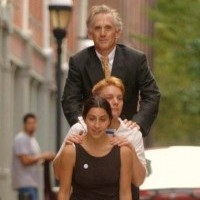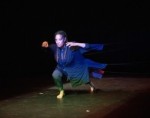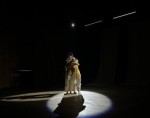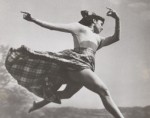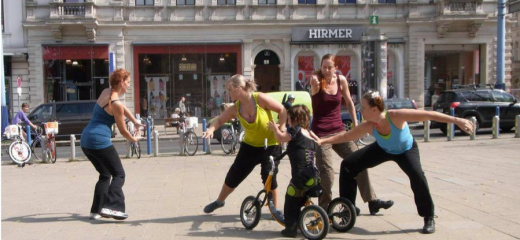
On DanceAbility: Talking Mixed-Abilities Dance with Connie Vandarakis
by Jonathan Stein
Connie Vandarakis has ended a 30-year career at the University of the Arts, including positions as Coordinator of Dance Education, Associate Dean for Liberal Arts, and teaching the Extended Studio Practice course, exploring how dance can be experienced outside typical dance techniques and by engaging surrounding communities. She has launched a new career as a master DanceAbility teacher and as vice-president of the DanceAbility International Board of Directors, and she has agreed to talk to us about this new venture.
Origins and Evolution of DanceAbility
Jonathan Stein: Connie, you have said that DanceAbility has shifted your paradigm in dance, reconstructed your beliefs, and exploded your vision as an artist. Can you tell us what DanceAbility is and why it has had this radical impact on you?
Connie Vandarakis: DanceAbility is a contemporary improvisation dance practice that is totally inclusive—of the whole spectrum of humanity. It is a container for all people with and without disabilities to experience dance improvisation. The methodology has been developed and refined over 30 years and allows participants to explore moving in community, deep sensing, and it is an artistic expression in creating the design of the experience. I enrolled in the DanceAbility certification-training course at the Vienna ImPulsTanz International Dance Festival in 2012 with the founder of DanceAbility, Alito Alessi, a year after my hip replacement at 50 years old. In that studio practice, I rediscovered dancing in this new configuration of my body. My experiences with this inclusive group of artists was life changing. The pedagogy of the method was well thought out and developed. My dancing was full of rich experiences of sensing and new awareness for making movement choices that I had never experienced as an improviser.
JS: DanceAbility was founded by then co-dancers Karen Nelson and Alito Alessi in 1987 with Alessi continuing as its Artistic Director. How has DanceAbility evolved since then?
CV: In the beginning it was one big experiment. No one really knew how to dance with people with different bodies and minds. Alito and Karen began studio practice research in classes and workshops they taught. Alito’s continued research and documentation of DanceAbility took the form of a methodology that could be shared in trainings. What started as a 20-page manual has grown to an over 200-page DanceAbility manual, a master teacher manual, and soon a master-trainer program. The principles, sequences, and procedures are refined in each training and through research and development in the two master-teacher certifications.
DanceAbility now has over 600 certified teachers in 35 countries on six continents. There are 21 master teachers who currently have license to conduct five-day intensive workshops along with the other activities in DanceAbility. We were just awarded a place in the Zero Impact Project funded by the Essl Foundation in collaboration with the Ashoka Foundation in Vienna. We are moving DanceAbility International from a global arts initiative program to a global social entrepreneur model. As part of that award, we have been invited to present at the Zero Project 2019 conference on Independent Living and Political Participation this month.
JS: As a practitioner of contact improvisation (CI) myself, I find it interesting that two major progenitors of CI, Alessi and Nelson, inspired by a Contact Quarterly article on mixed-abilities dance, were originators of DanceAbility. Why these roots in CI?
CV: CI embraces our humanness and ability to connect through physicality. The point of contact between two people in CI asks that you be acutely present to your sensation, the relationship, time, and what else is happening. In my mind, this is a perfect compilation of elements that create a good movement experience in mixed-ability dance. The variation of touch—whether on the skin, through muscle, or moving to weight sharing through bones—allows for multiple levels of possibilities with different kinds of physicality. Practical physics taught in CI encourages a large spectrum of movement possibility and allows our neuromuscular and vestibular systems to thrive.
DanceAbility has taken these principles and elements and created exercises to help a community understand the bodies and minds of its participants. These sequences build to a safe, democratic, and artistic experience that leads to an open improvisation. Improvisation itself allows for infinite movement possibilities to arrive in the design of the experience. It allows both the highly trained and novice dancers, those with and without disabilities, to find new movement experiences and expressions separately and together in community. We believe that in DanceAbility there is a mutual learning and sharing for all people involved in the class. Isolation between people with and without disabilities disappears, and we can share in a dance experience.
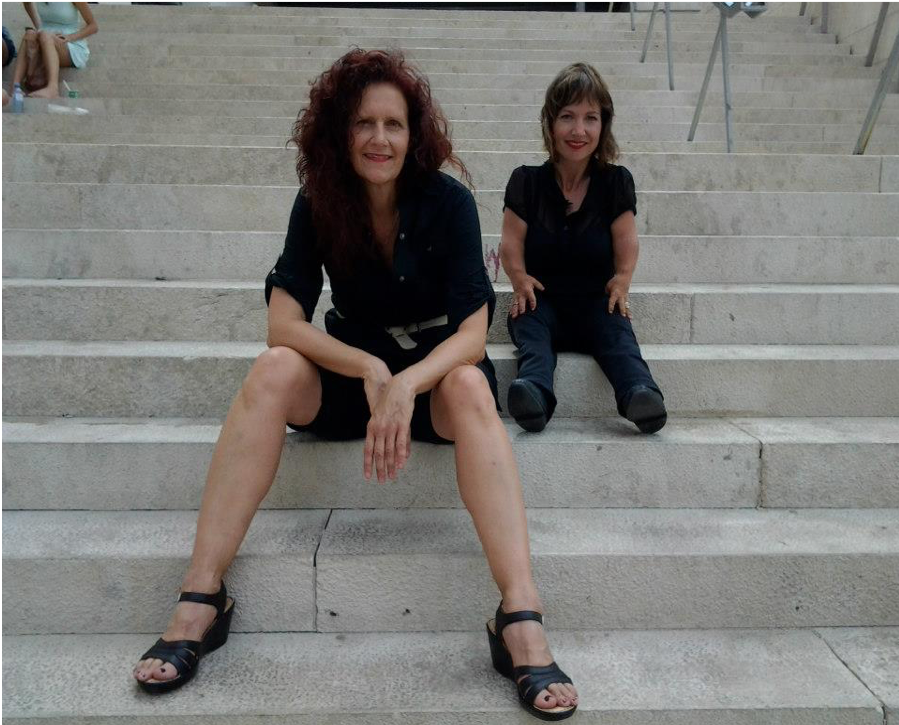
Photo: Eckhart Backofen
DanceAbility and Democracy
JS: Some might assume that professionals working with mixed-abilities dancers must have a therapeutic goal of how DanceAbility can “help you,” or “help you conform to the norm,” but Alessi has said it is not a therapy seeking to improve function and that it “values expression over function.” Do you concur, and how does this work in practice with teachers who bring “helping” instincts to the practice?
CV: Yes, I am in agreement; we value expression over function. In dancing with people with and without disabilities, people have an opportunity to see each other from a different lens and mutual learning occurs. There are participants in classes who may have a “caretaker” mentality with disabled populations. As we move through the class, there are structures in place so “caretaking” is taken out of the dance equation.
Our biggest goal outside of expression is to eliminate isolation between people. There are over a billion people in the world that have some kind of disability, one in seven people, according to the World Health Organization. There are many factors that show this number growing in the next few years. DanceAbility uses the power of the arts to transform through its dancing. In teaching mutuality between participants, new learning, awareness, and social constructs can form to build a more inclusive society.
JS: You have observed that traditional dance training is about imposing a technique on the dancer’s body, and that this alternative aesthetic and method asks: what can we learn from everyone’s bodies and what can everyone bring to the dance. Can you elaborate?
CV: One of Alito’s famous quotes is, “All bodies speak.” Alito also says that, “Everybody can make every movement, and any one part of the body can experience and express every emotion that exists.” These improvisational exercises and structures help people explore how their particular body moves, creating possibilities for new insights into the qualities and movements of their body. In addition, there are opportunities to create relationship and touch that are mutually arrived at by the participants. The dancing arrives from the people’s bodies and minds who engage in the creative process together.
JS: I sense that your passion about DanceAbility may lie in what you have called “feeling the democracy of art” or what Alessi has described as the “art of being together.” Similarly, Steve Paxton has spoken of how “it erases the assumed distinction between able/disabled … [for] a time the separation is dissolved.”* Can you elaborate on how experiencing the democracy in the dance impacts those involved?
CV: DanceAbility classes are sequenced so that mutuality develops between the dancers. In this way, stereotypes and prejudices begin to dissolve and the movement developed in the improvisation becomes the focus. In a DanceAbility class, we do not make anyone do what they don’t want to do. There is a broad spectrum of disabilities and some individuals are dependent on the help of others to live. In this way disabled people are moved, ambulated, manipulated in therapeutic modalities and helped in various activities.
In a DanceAbility class we create exercises where all individuals can create movement for themselves (even if it’s very small), and we have consent built in so the individual makes a choice to engage or not. We do not make people move or manipulate the body without consent. Allowing everyone to have a voice in their participation teaches mutual respect, empowers participants, enables patience in learning someone else’s movement timing, and creates opportunity for relationship. When the class is over, we hope that the learning of those relationships, respect, mutuality, and understanding carry on outside the studio walls.
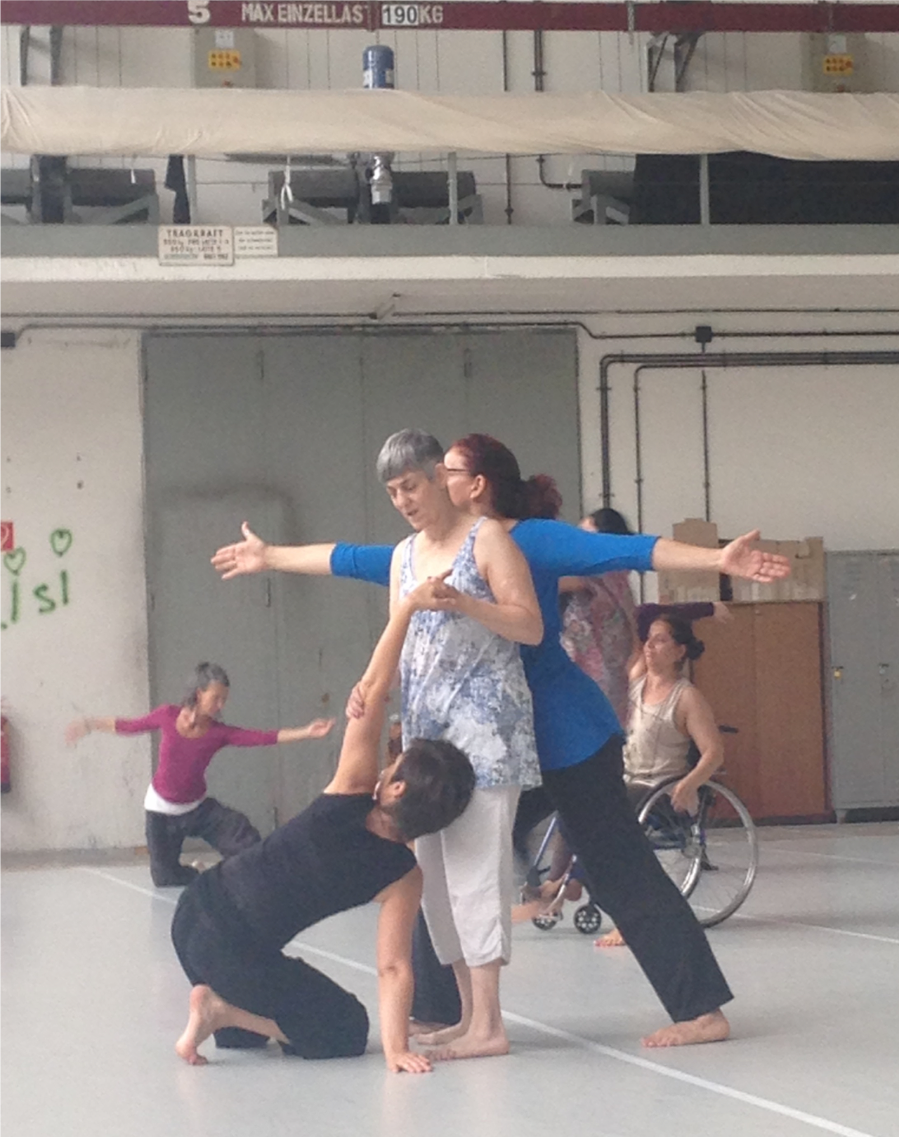
Photo: ImPulsTanz 2015
Inclusive Dance in Performance
JS: The duet performances of Alessi with Emery Blackwell, the principal dancer who uses a wheelchair, seem to reflect this dissolving of the able/disabled separation with Alessi and Blackwell, each alternatively moving in the wheelchair or on the floor. How do you view the performances?
CV: Alito and Emery have worked together for over 25 years with the intention of making good dance choreography. Their dances invite a curiosity to challenge your perception of what you might have considered concert dance or mixed-ability dance. They create dances together through their creativity, humor, and imagination in an effort to grab your attention about bigger social concerns. Emery was part of an activist group for independent living for disabled people in Eugene, Oregon, before becoming a dancer. Emery said, “It was much easier to get my point across without having to repeat myself,” so dancing became his form of expression. I have had the honor of being in their dance rehearsals and watched their process. They are both an inspiration to me.
JS: There has been an interesting thread among dance artists since the '60s of trying to remedy the historical non-inclusiveness of dance and of our larger society.** Recent examples include the Mark Morris Dance Company creating movement classes for people with Parkinson’s Disease. Others have created dance performance with mixed-abilities dancers, such as the collaboration of Jérôme Bel and Theater HORA of Zurich in the controversial Disabled Theater that made the international circuit in 2013, including at New York Live Arts. More locally, in 2017, the Pennsylvania Ballet II did outreach and created work with students with intellectual disabilities at St. Katherine’s School in Wynnwood. The HMS School for Children with Cerebral Palsy in West Philadelphia has partnered with dancers from Drexel University and with dancers from Dancefusion. What do you think of these developments, and do you have a critique of them from a DanceAbility perspective?
CV: There are some responsible dance companies and dance programs that have researched and developed successful programming. These are usually specific to a disability group and not totally inclusive. For example, there are some very successful mixed-ability dance companies that work exclusively with physical disability or with a particular condition such as Parkinson’s.
I also believe that mixed-ability work has become popularized, and some companies and organizations are jumping on that bandwagon for grants and funding. The question becomes: what is the intention of the work being made, and what resources do you have for the best outcome? Companies, independent artists, or studios that work with mixed-ability populations and have no training and seek neither training nor desire to consult professionals are irresponsible in some ways—and the work can become spectacle or disingenuous. There are so many resources for best outcomes today in mixed-ability work.
JS: I’m sorry I missed the Philadelphia performance last fall of the Heidi Latsky International Project, ON DISPLAY PHILADELPHIA, which you directed. It was part of a worldwide event held on International Day of Persons with Disabilities. Might you describe it, and do you have any plans for future projects or performances here?
CV: The Heidi Latsky project ON DISPLAY is described by Latsky as “a deconstructed art exhibit/fashion show and commentary on the body as spectacle and society's obsession with body image. It turns a cast of diverse and extreme bodies into a sculpture court where the performers are the sculptures.... [It] is now a movement, a growing portfolio of works that explore and demonstrate inclusion through art.” Last fall’s performances were minimal in movement and more about the visual aspects of the site-specific performance. Over 20 people with and without disabilities became an ensemble that included actors, attorneys, business people, CEOs, dancers, educators, holistic healers, and writers. On October 27th, we donned our all-white costumes, and for two hours we posed in stillness with very slow transitions as people flowed through Suburban Station. The event was filmed and sent to Latsky to be incorporated in the larger international film which debuted on December 3rd, the United Nations Day of the Disabled Person. The film debuted in Philadelphia at the Prince Theater with a shorter version of the dance. In the future, we would like to create a piece for Disability Pride Week in Philadelphia and begin ongoing DanceAbility classes.
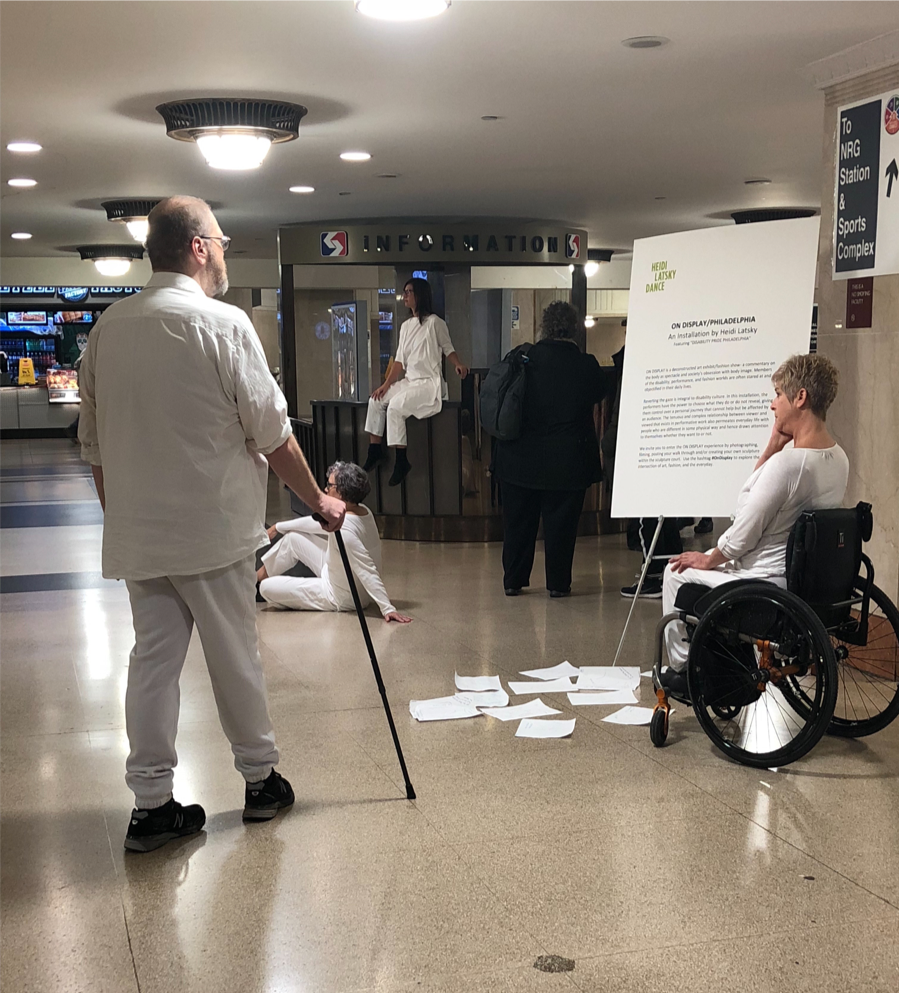
Photo: Vicki Landers
On Intergenerational Contact Improvisation
JS: Finally, since we have been recently meeting up at the Sunday afternoon CI classes taught at the Parlor in South Philadelphia, I’m wondering if you have any thoughts about the intergenerational aspect of CI injected by our presence there?
CV: Great question, I’m so happy you asked. By participating in the CI classes, we (as older dancers) are deconstructing the Western concept of ageism in this country. I don’t experience this ageism in other countries where we teach. The idea that when one reaches a certain age, one should become less active or even inactive is ridiculous, especially in dance. In an intergenerational CI community, there is the opportunity for mutual learning the same as in DanceAbility classes. The perceptions and stereotypes of the older dancer are dismantled. When younger dancers surrender their presuppositions of ageism and we actually share weight and engage in that moment and then the next moment, the dancing is spectacular.
For further information on DanceAbility, see the DanceAbility Website, https://www.danceability.com/
*The complete statement of Steve Paxton as provided by Vandarakis is, “With DanceAbility, Alito Alessi put this idea to work with people with disabilities—any disabilities—and discovered that it works, and it erases the assumed distinction between able/disabled…. DanceAbility is a kind of healing; not to ‘heal’ the disabled, but to heal the able and disabled at once, in one forum. For a time, the separation is dissolved. For our minds, the separation can no longer have unquestioned power over our thinking. For our hearts, a connection is forged between creative partners. Try it. You will be moved.” Mad Brook Farm, VT, April 16, 2011.
**See, for example, Ann Cooper Albright’s chapter, “Moving Across Difference—Dance and Disability,” in Choreographing Difference (Wesleyan Univ. Press, 1997), pp. 56-92.
By Jonathan Stein
February 6, 2019

